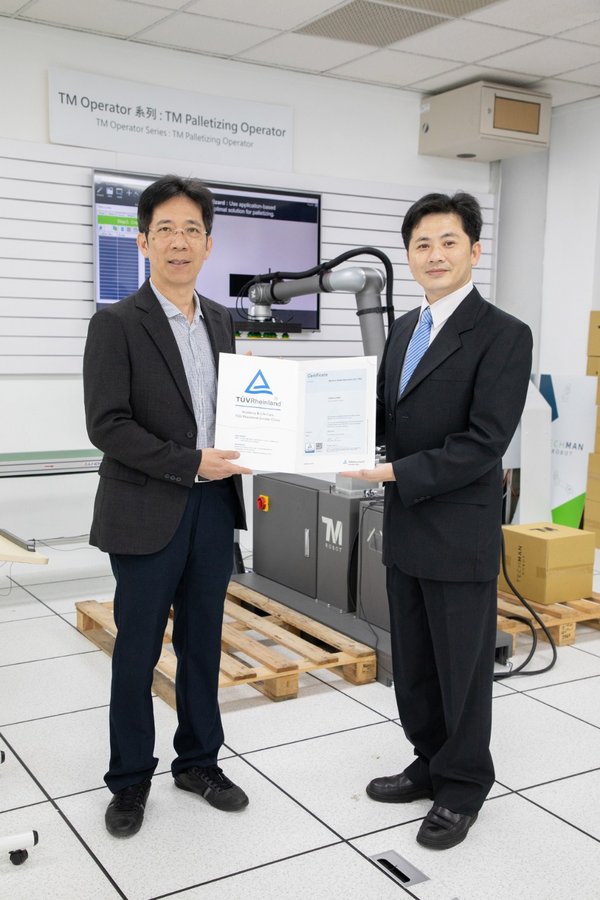Taipei,, July 21, 2020 / Prnewswire / – Intelligent manufacturing is a burning subject in the industrial sector. Many countries now believe that smart robots will play an increasingly central role in future technological development. However, potential risks exist in interactions between mechanical equipment and humans during the production process. Techman Robot ordered Tuv Rheinland provides advanced internal training for its specialized staff to strengthen the safety of human-machine interactions, as well as to support the intelligent manufacturing and automation capacities of its foreign customers. The first class of 10 trainees recently received its personal qualification certifications after being assessed by Tuv Rheinland. This certification provides proof of the risk management capacity and professional robotics expertise of this technical staff. Individual certificates can be verified through the Certipedia certification system maintained by Tuv Rheinland.
Risk identification and assessment must be carried out when designing robots and industrial systems to avoid professional security problems. Operating risks must be reduced by design or preventive measures. The design of the robot itself must provide a certain level of security. If the level of risk cannot be reduced effectively by design, safety measures must then be incorporated. Robots and industrial systems are part of the EU machines directive (2006/42 / EC). They must comply with harmonized standards for industrial robotics which include standards for industrial robots and robotic systems (in ISO 10218-1, in ISO 10218-2), as well as the technical specifications of additional collaborative robot (ISO / TS 15066 ). Electrical equipment in robots and systems must also comply with international standards for electrical equipment used in industrial machines (EN / IEC 60204-1) and relevant regulations of the electromagnetic compatibility directive (2014/30 / UE).
The training conducted for Techman Robot covers the application of mechanical and electrical security standards, the risk assessment of potential dangers, the configuration and selection of protection devices, the arrangement of automated robotic production lines, design of tasks collaborative of human machine, as well as maintenance and management requirements. It provides technical staff with an intensive course on improving safety practices and review skills. The staff who succeeds in the qualification exam receives a mechanical security certification issued by Tuv Rheinland certifying that they are capable of writing CE technical construction files (TCF), identifying the risks and mechanical dangers, presenting automated robotic production lines, planning safety and protective measures and Writing risk assessments in ISO 12100. At the same time, qualified personnel can also provide their customers companies with production line planning and prepare risk assessment reports. These qualifications increase customer confidence in their professionalism and reduce the risks of customer automation equipment.
Techman Robot was founded in 2016 and is a global pioneer in collaborative robots and smart vision systems. He is the only manufacturer of collaborative robots based on TaiwanAnd was catapulted secondly among all the brands of collaborative robots in the world. More than one hundred distributors located in continent China,, Europe,, Japan,, South KoreaAnd Southeast Asia Now provide your collaborative robots with vision, software and integrated applications solutions. Techman Robot hopes to break down the barriers of human machines thanks to an innovative technology. By exploiting the respective forces and advantages of humans and robots, a closer collaborative relationship can be built to achieve a future of transparent collaboration between man and machine.
The market can reserve its attention to the functions and applications of smart robots, but it was the safety of “people” that took priority over everything else. This is essential for the prevention of “human damage” by robots. Tuv Rheinland uses the technical perspectives of different industries by first analyzing the potential risks in a product. Relevant international standards are then used as a reference to incorporate active and passive safety technologies in the design of robots so that robots can perform tasks fixed by humans while ensuring the safety of the two.
Photo – https://photos.prnasia.com/prnh/20200721/2863229-1?lang=0



